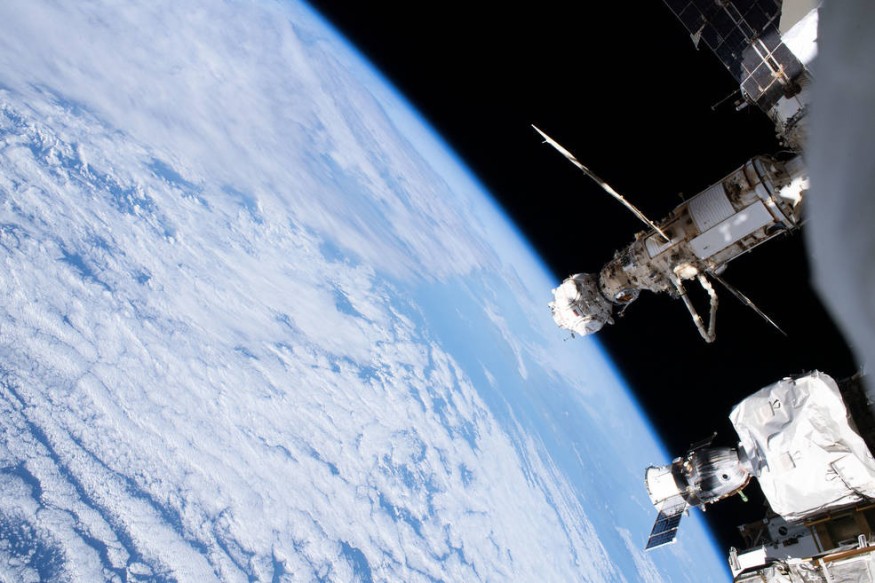The Soyuz MS-22 spacecraft was presumed hit last Wednesday, December 14, by some space debris or micrometeoroid that ruptured the coolant line and resulted in icy particles being sprayed away into space, as shown in NASA TV images. Cameras on the space station have since located the small puncture that indicates the impact.
At a press conference on Thursday, Roscosmos and NASA officials said they were still investigating how the coolant line of the capsule's exterior radiator sustained a microscopic hole last week, just as two cosmonauts were preparing for an extravehicular activity.

Will Soyuz MS-22 Carry Cosmonauts Home?
Sergei Krikalev, head of human spaceflight projects at Russia's Roscosmos, told reporters at the news conference hosted by the US space agency that the damage was being analyzed.
If a thermal investigation indicates that MS-22 is unsuited for crewed flight, a scheduled launch of another Soyuz capsule from Baikonur Cosmodrome in mid-March might be pushed back, and it would launch uncrewed, he added.
NASA's International Space Station program manager Joel Montalbano said that Russia is looking to send the next Soyuz vehicle in late February. That means the damaged spacecraft would be returning uncrewed to Earth.
MS-22 ferried Russian cosmonauts Dmitry Peteli, Sergey Prokopyev, and NASA astronaut Frank Rubi to the International Space Station (ISS) in September. There are currently seven people aboard the space station, but if MS-22 is ruled unsafe, the ISS will only have one "lifeboat" capable of taking four people in case it needs to be evacuated.
In October, NASA astronauts Josh Cassad, Nicole Mann, Japanese Koichi Wakata, and Russian Anna Kikina boarded a SpaceX Crew Dragon.
Montalbano pointed out that more research is needed to identify whether it was caused by naturally occurring micrometeoroids, manufactured junk in orbit, or a technical failure.
Geminid Meteor Shower Did Not Cause the Leak on Soyuz
The cause of the damage remains unknown. Montalbano clarified that it does not appear that the annual Geminid meteor shower was to blame, as the hull was punctured from a different direction.
"Both the trajectory team in Houston and the trajectory team in Moscow confirmed it was not from the meteor showers; it was in the wrong direction," Space.com quoted Montalbano.
Not only is NASA assisting Russia's state space agency Roscosmos with the leak inquiry, but both organizations are key ISS collaborators. The Soyuz spacecraft delivered NASA astronaut Rubio with two cosmonauts to the orbiting laboratory in September and is expected to return the three to Earth in March.
The Geminids theory is only one type of possible impactor. Both NASA and Roscosmos think it is probable that a piece of space trash pierced the hull of the MS-22. Any item capable of generating such a tiny hole about 0.8 millimeters across is too small to be monitored from the ground.
RELATED ARTICLE: Cosmonauts' Spacewalk at the International Space Station Cancelled Due to Unexplained Leak From Docked Soyuz Spacecraft
Check out more news and information on Space in Science Times.
© 2025 ScienceTimes.com All rights reserved. Do not reproduce without permission. The window to the world of Science Times.










